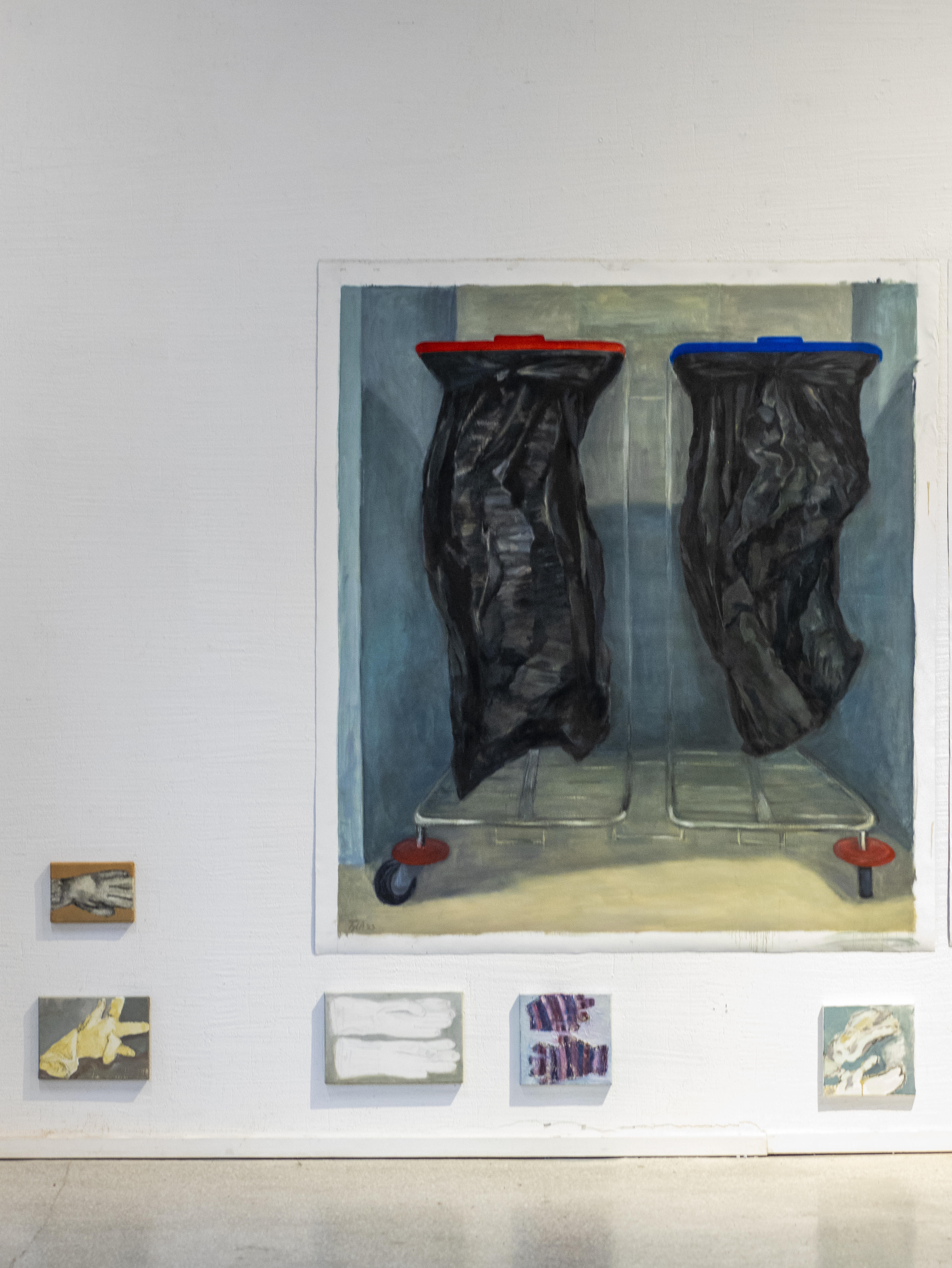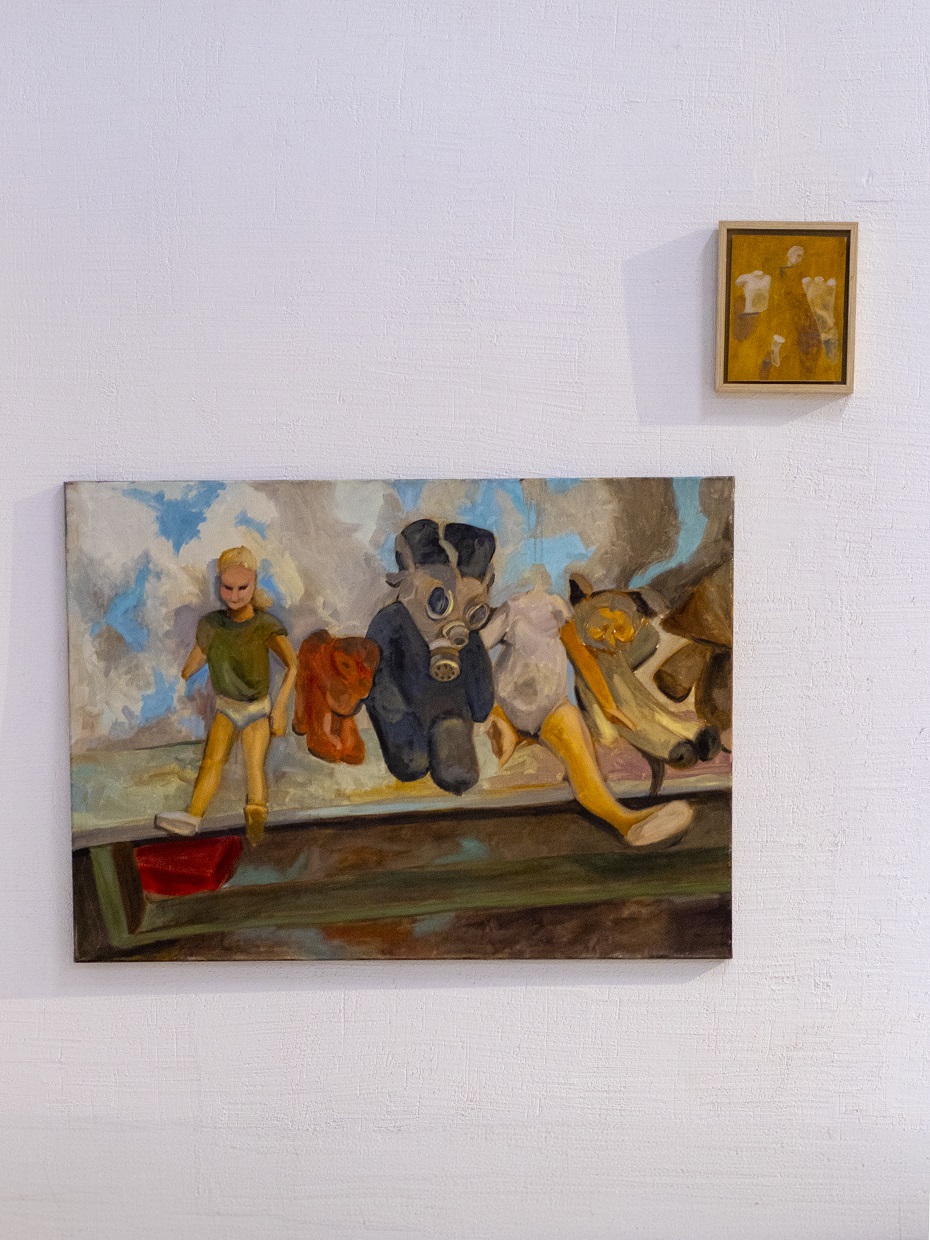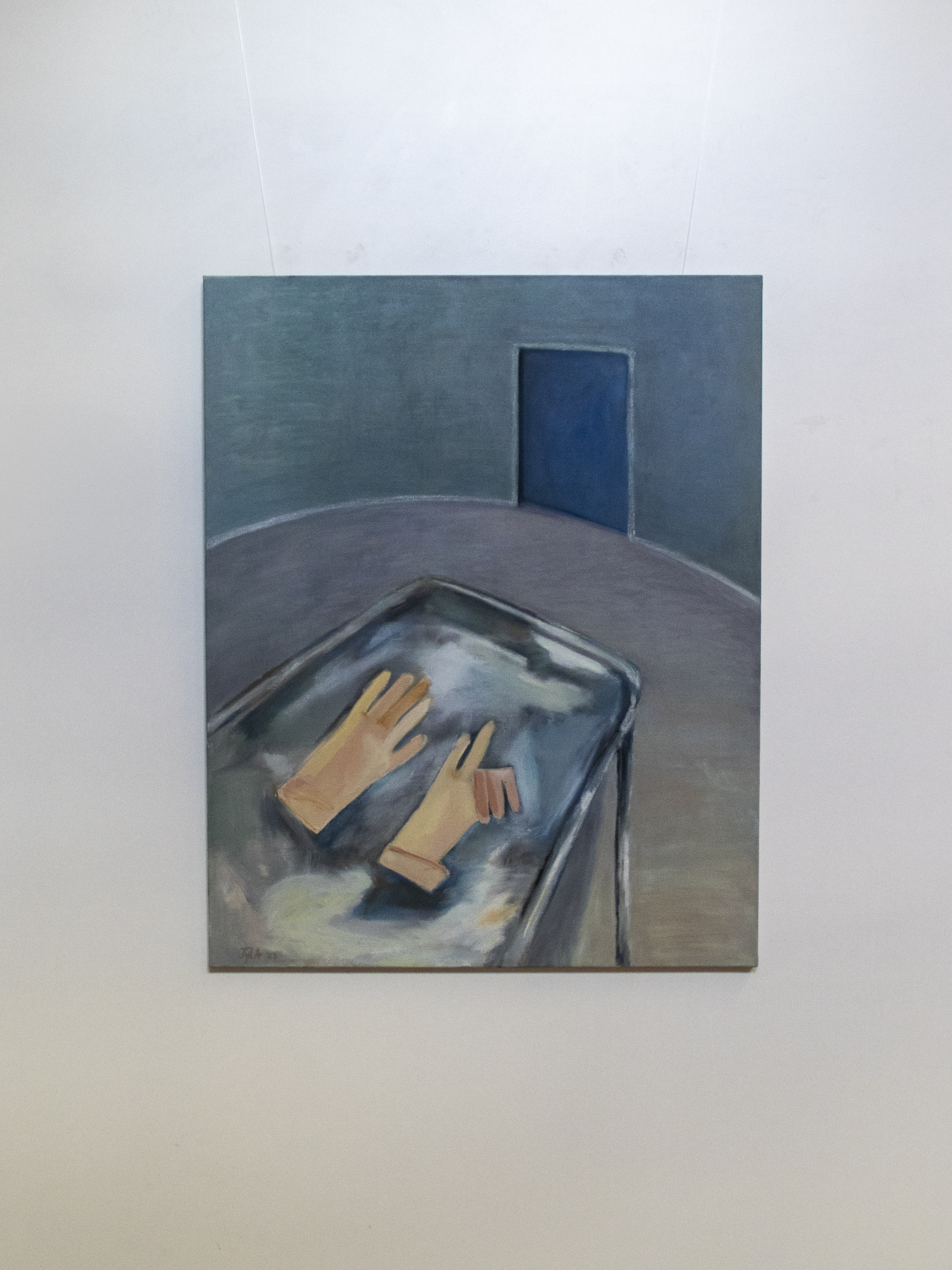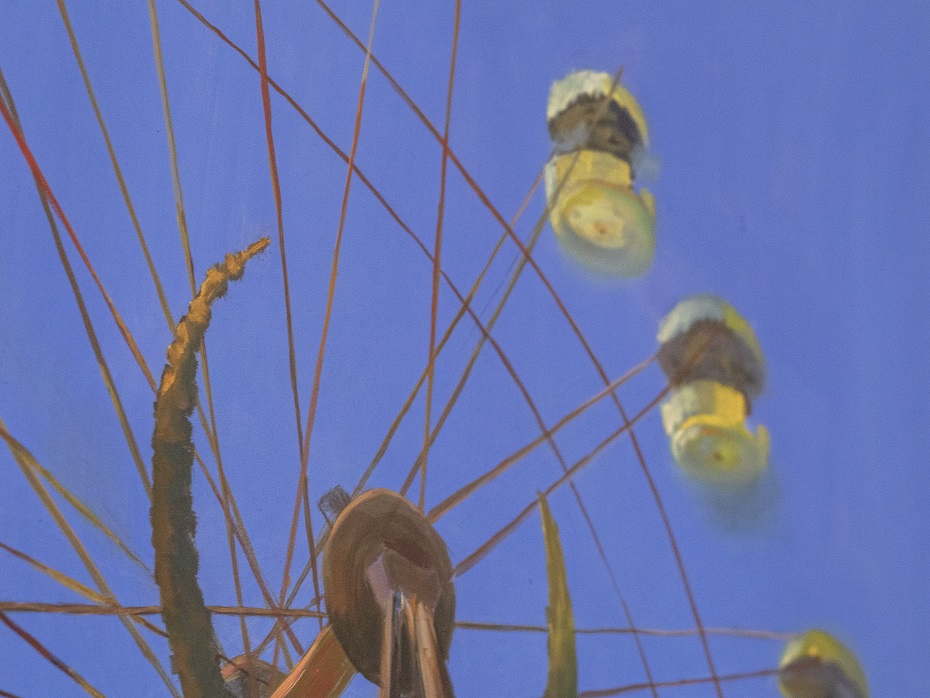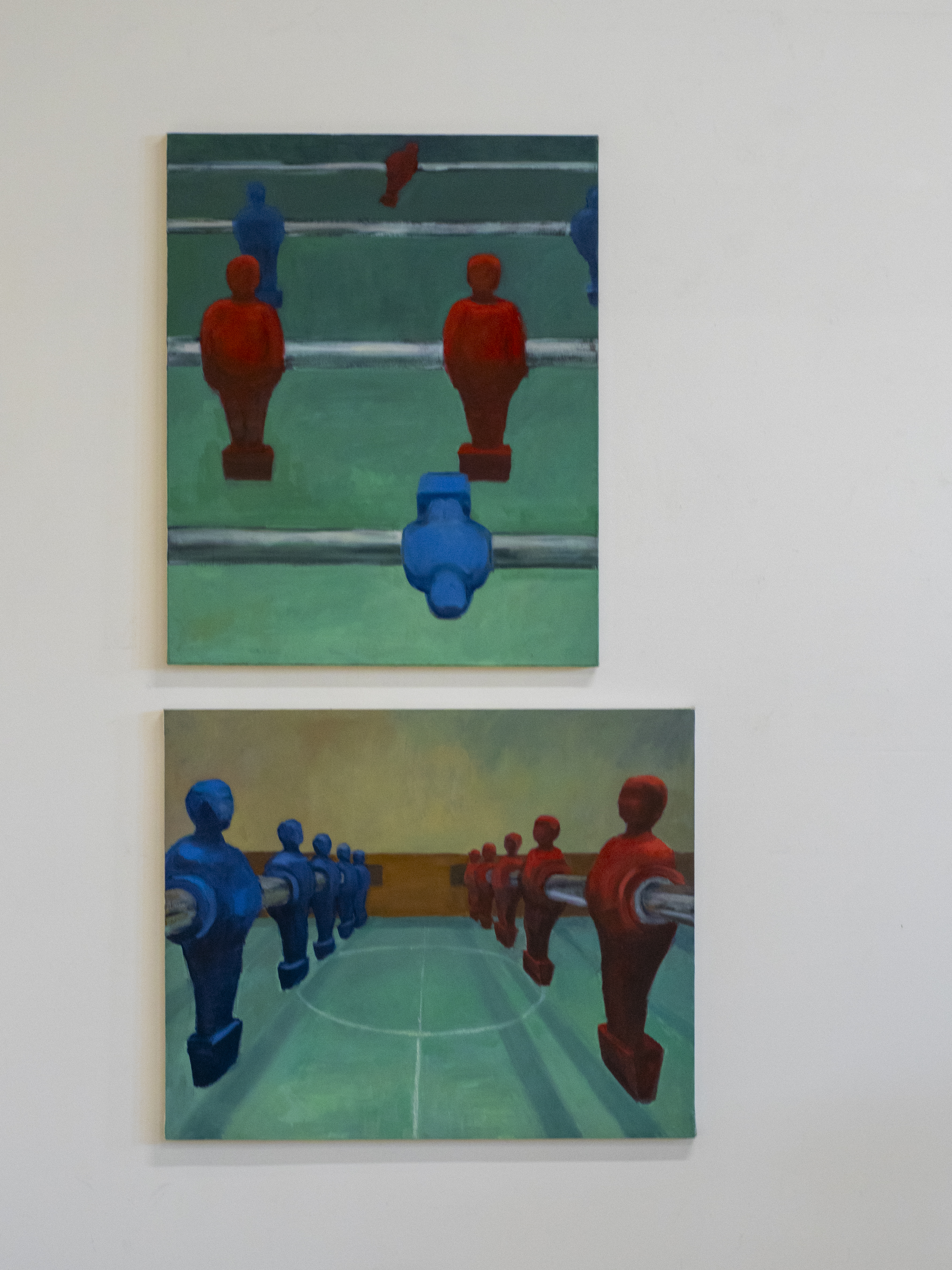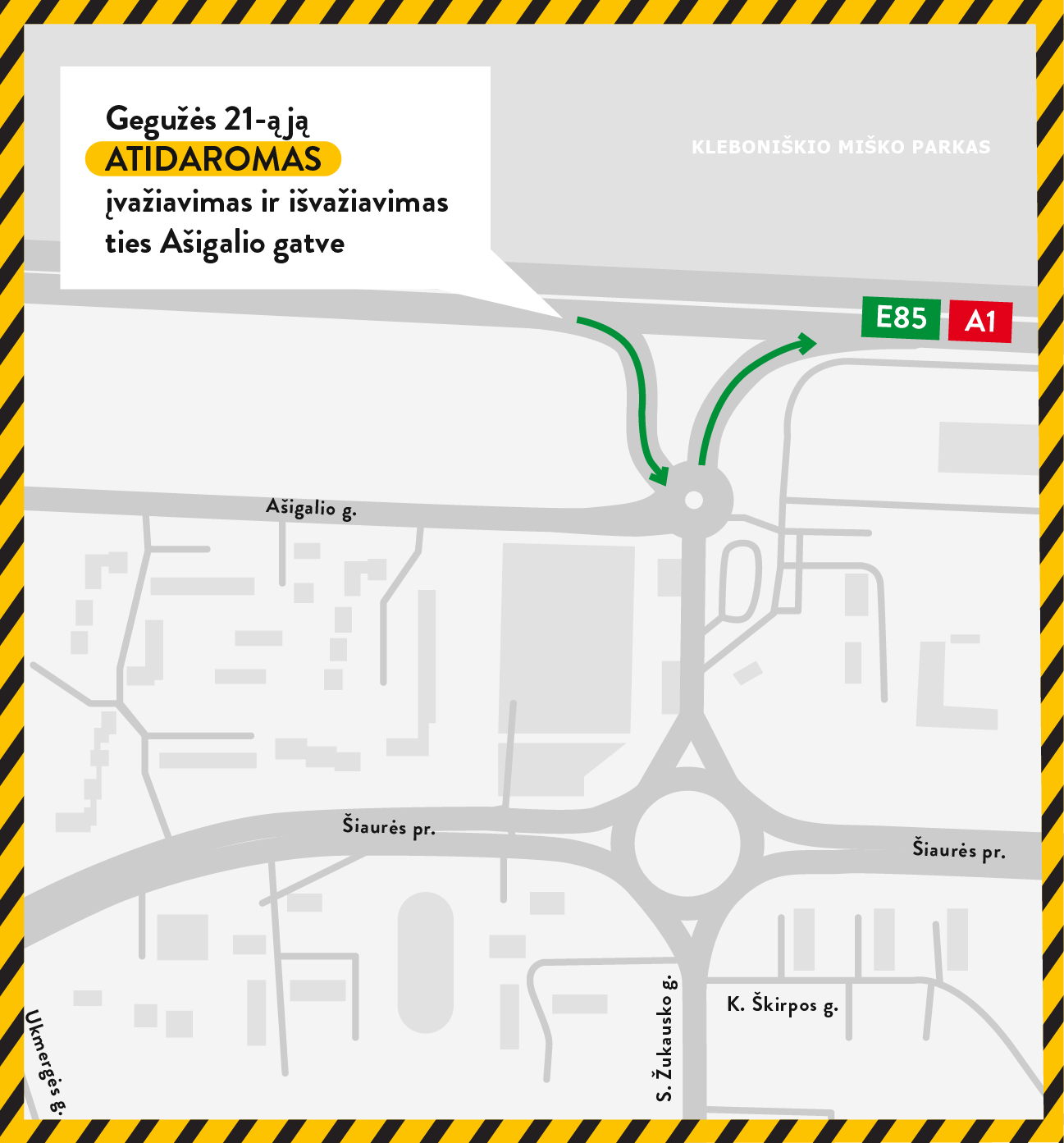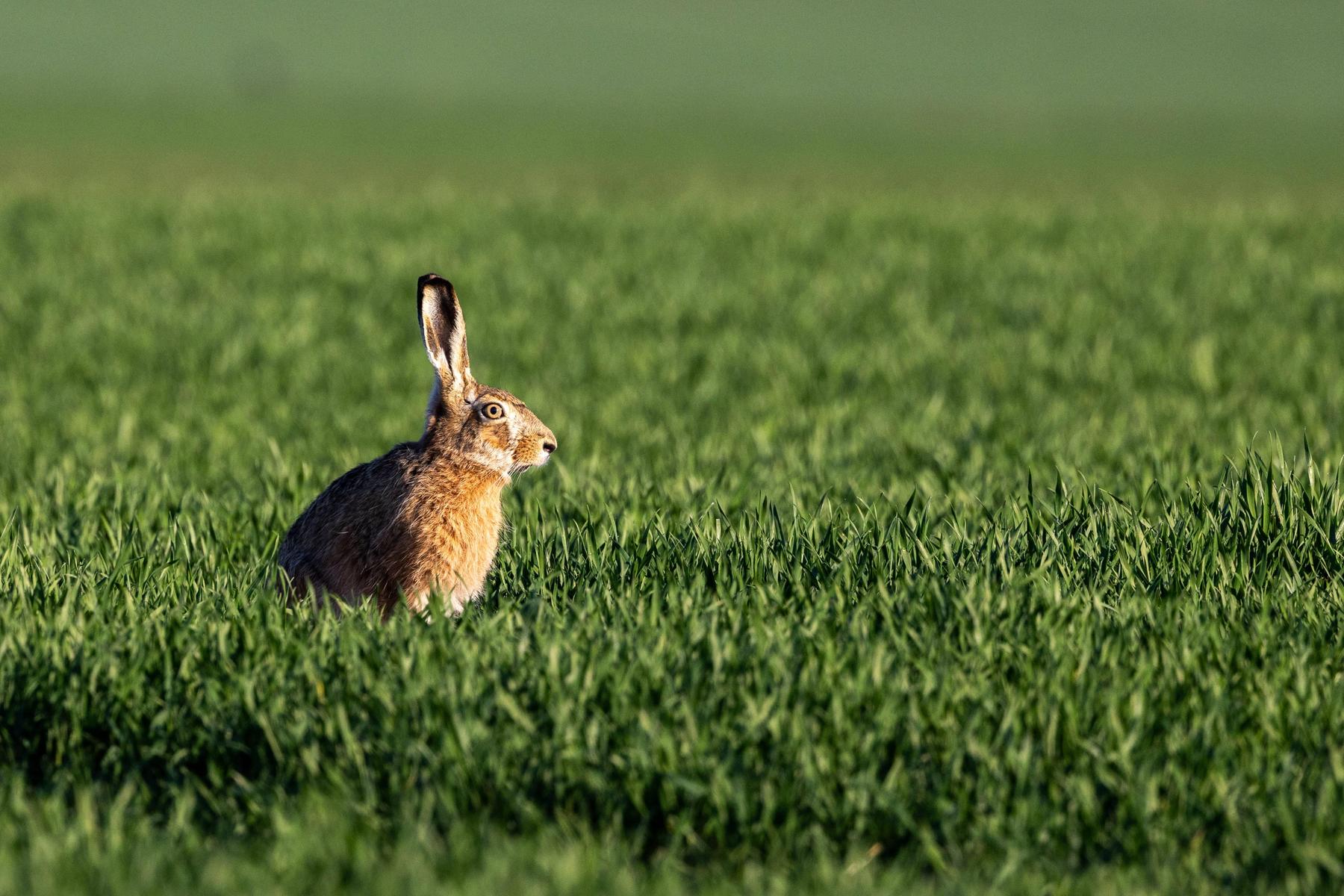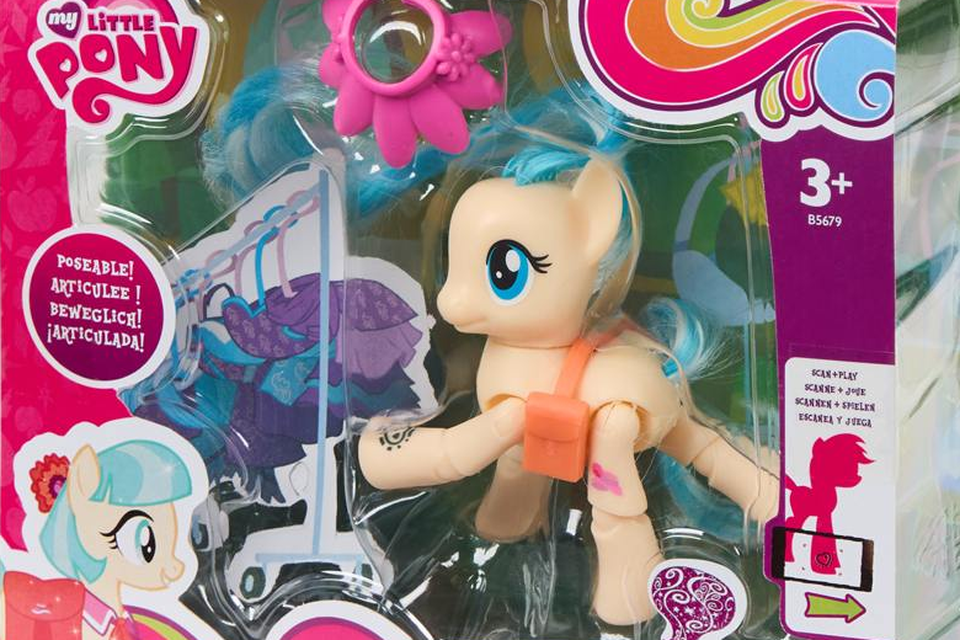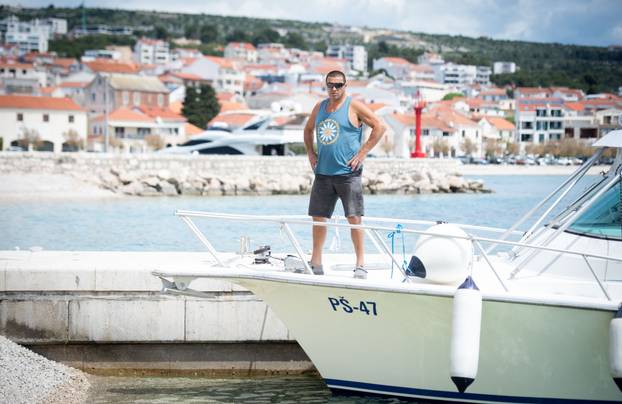Sterility and radiation: a double dose of insightful

Curiosity is born where fear shrinks – it pushes us to explore uncertainty. The proverb says: You are afraid of wolf – don’t go into the forest, but when the wolf is in the spotlight, the desire to go into that forest is only getting stronger. Curiosity and fear are moved by specific, personally experienced spaces – those that often remain aside or lie in the collective subconscious. From these places, artists draw inspiration, and their images turn into objects appearing in works that cause a sense of recognition, nasty or tension.
Inga Ponomaarenko and Audrė Tylienė, who exhibit works at the exhibition, are currently studying at the Vilnius Academy of Arts Master’s degree in Painting 1st year, although both have linked their lives with the world of arts: Inga has graduated with geodesy and forestry studies, works in Ignalina Municipality Administration; Audri found a vocation in the medical sciences.
These two painters on the art path present themselves to the audience for the first time by revealing a part of themselves.
Photo by S. Karečkaitė
A. Tylienė engages the viewer in her paintings in fears, secrets, myths in hospitals, where patients rarely visit and doctors are a workplace. I. Ponomarenko presents paintings from Chernobyl, to which she traveled in 2018. These two seemingly unrelated themes in the gallery space are wearing and creating new context and sub -bodies.
While observing visitors, I captured the tendency that as soon as they entered the gallery, they immediately tend to Chernobyl’s images. The bright, earthy color palette catches every eye and gaze of the visitor. Ponomarenko’s work « Taste » (2024) responds with a sweet name for less sweet reality. Is this the remaining aftertaste after a trip to Chernobyl? Maybe the remaining smell of rubber and the chemistry in the environment? The snippets of everyday life are also formed by other works: « Zone » (2024), « Jupiter » (2023) and « Parade » (2023). These works allow the viewer to travel to the author’s location, open the door, which have already spilled the paint, sit on a brown chair and watch the metal pots lit in the sun. This peculiar journey of the time machine can encourage curious ones, and those who are afraid to get interested.
Photo by S. Karečkaitė
One of the most prominent accent painter I. Ponomarenko’s exhibition is children’s toys: teddy bears, dolls, relics from kindergarten. The dolls were dropped upwards, the shapeless teddy bears, and one of them put on a gas mask testifies not only to the speed of the premises, but also to the tragic reality of children – their toys remain where radiation levels will not decrease for centuries. The gas gas on the toy symbolizes not only the child’s desire to protect his beloved toy, but also the painful reality: such images full of fear and uncertainty will remain in the memory of children for life.
Photo by S. Karečkaitė
I. Ponomarenko’s works are able to include the viewer in a few moments in a personal narrative that comes from paintings. These works become a point of resistance that encourages you to turn on. All of this turns into a single story – a brain game in which the viewer becomes an active participant.
Photo by S. Karečkaitė
From curiosity for distant areas to fear in the nearby areas in the gallery, there are only a few steps. A. Tylienė allows the visitor to look at various hospital spaces. Looking at the paintings, I feel like the underground corridors of Kaunas clinics – cold, uncomfortable, persecuted by unjustified fear. According to the artist, « When creating in turn, the artistic, the medical gaze, the creative ideas and the motifs of the paintings, I use my medical vision and thinking (…) their (images – ed.) I use the threatening recognition as a metaphor to convey the appropriate idea
The rubbish bags’ diptych « dirty laundry » from the project of the same name (2023) allows the viewer to feel routine and urgent moods in medical facilities – when patients are admitted one after the other, and after the last one can finally breathe and notice how the trash bags were unexpectedly filled with various medical items. If you miss you to drop used gloves in a waste bag, they remain thrown on the floor, starting a new cycle created solely about them. One of the artist’s main tools – medical gloves – intertwined with children’s autumn gloves, which are associated with work tools here. This is how a distinctive cycle is born: from start to finish; from now to later; from morning to evening.
Photo by S. Karečkaitė
The concept of uncomfortable is further developed by works « X -ray operating » (2022) and « Controlled Zone » (2022). These works, conveying a quiet, slow moment, are inviting to stop in this constantly rushing world and remember « Memento Mori ». The sterile, non -chaotic, concentrated painting blends in harmoniously with the features of the depicted places – medical cabinets, thus enhancing the tension and stimulating the various possible escape scenarios.
A. Tylienė’s painting creates a tension not too clearly unfolded, but through laconic, essential motives. For never lying in the hospital, these paintings are able to convey silent anxiety and subtle reluctance to be in such spaces. The artist invites the viewer to engage in a deeper story of what happens during surgery and what images of our minds capture when they get up, and then remember when they get up, and later. Every viewer here can create their own story based on personal experiences or remembering deeply hidden memories of the most sensitive aspects of human experience, from absolute uncertainty to hope and survival.
Photo by S. Karečkaitė
However, this exhibition, first of all, about places, not about things. About the places we (assume) we are afraid of, which we visit with curiosity or inner fear. Both the hospital and the Chernobyl can be described in the same words – fear and curiosity. These two emotions become the connecting axis of the exhibition: paintings reveal uncomfortable, worrying spaces, but at the same time awaken the desire to explore, enter them, though timidly.
The work of these artists is the first and infinitely successful. Both knew what was bound by them, and it was undoubtedly reflected in their works. With great insight and excellence, painters were able to convey not only themselves and their paintings, but also complement the exhibition emotionally, creating new narratives and emotions that resonate with each viewer.
Who? Exhibition « About Things and Places ». Exhibition-part of the 90th anniversary of the Lithuanian Artists’ Union.
Where? At the Gallery of Linas (Linas St. 62-308).
When? Operating until May 17th. I -V 10-17, VI – 11-16 p.m.

